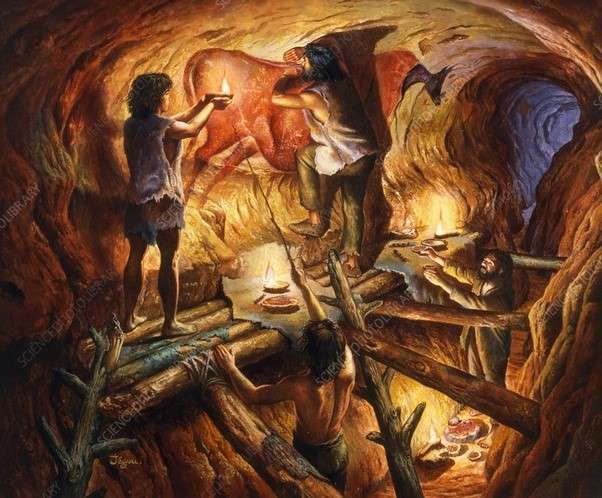From Cave Walls to Canvas: Tracing the Evolution of Indigenous Painting in India
- indigenousartsfoundation
- May 15, 2024

t
he evolution of painting is a reference to the rich artistic tradition that has flourished over ages in the broad tapestry of India’s cultural heritage. Indian painting has come a long way, capturing the spirit of many customs, stories, and creative emotions, from the simple brushstrokes on cave walls to the elaborate masterpieces on modern canvases.
- Cave Paintings: A Glimpse into Prehistoric Art
The amazing cave paintings that can be found all over the nation are the origins of Indian painting’s historical journey. These thousands of years old prehistoric artworks provide a fascinating view into the customs, ideologies, and cultural tastes of early human societies. These earthy-hued cave paintings serve as a visual record of a previous era, portraying scenes from hunting adventures, daily life, and religious rites.
- Ancient Murals and Petroglyphs: Unravelling the Mysteries
Indian painting became more complex and creative as civilization developed. Ancient paintings that depicted historical and mythological stories in vivid colors and fine detail graced the walls of palaces and temples. In the meantime, cultural practices and symbolic messages were communicated through artwork carved on rock surfaces, providing important insights into the social and spiritual structure of prehistoric communities.
- From Realism to Abstraction: The Evolution Continues
The 20th century saw a strong striving for artistic freedom and individual expression in Indian painting. The Indian modern art movement covered a wide range of styles and techniques, from the Progressive Artists’ Group’s bold abstraction to the Bengal School’s precise realism. Artists such as FN Souza, SH Raza, and MF Husain experimented with new visual languages and symbolism, pushing the limits of traditional aesthetics.
- Contemporary Painting Techniques: Innovations in Expression
Indian art is still changing in the twenty-first century, utilizing modern methods and digital tools to expand the creative possibilities. The boundaries between conventional and innovative techniques are blurred as artists experiment with mixed media, installation art, and interactive projects. Contemporary Indian artists tackle a wide range of subjects, from social justice and environmental activism to personal identity and cultural legacy, in their hyper-realistic portraits and conceptual artworks.
“From the primal to the profound, Indian painting weaves a tapestry of stories, spanning from cave to canvas, uniting past, present, and future.”
- Preserving the Legacy, Inspiring the Future
It is clear when we consider the development of indigenous painting in India that this vibrant tapestry of artistic expression is a dynamic force that shapes the present and inspires the future rather than only being a mirror of the past. Indian painting is a vivid example of the enduring impact of human creativity and imagination, spanning from the prehistoric strokes on cave walls to the infinite possibilities of the digital age.
In summary, the development of Indian painting from its modest origins on cave walls to the enormous canvases created by modern artists is evidence of the flexibility, perseverance, and creativity of Indian civilization. In addition to celebrating this rich tradition, let us recognize the necessity of protecting and fostering our creative legacy to guarantee that the beauty and diversity of Indian painting will continue to inspire upcoming generations.






